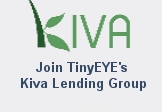TinyEYE's Online Speech Therapy Video
The Importance of Speech Therapy
Speech development starts at birth when our brains respond to our parents’ voices. As we grow, we learn to differentiate speech sounds from non-speech noise. We discover that facial expressions, eye gaze, vocalizations, and actions help us to control our world, make our point, and receive what we want. Soon, the words we hear represent meaningful objects, people, and actions. Ultimately, these words become our own to use so that we can share our ideas and make our wishes known. Our own speech and language help us to understand what we hear and read, while enabling us to talk and write about our ideas. We are learners and contributors to the world around us.
We are not born with a ready-to-use vocabulary or complex language structures. All children start talking through simplifications of adult speech, while their breath support, voice box, mouth muscles, and brain learn to work together. As children are exposed to language and experiences, they start to build their knowledge of words and what those words represent. Slowly, children begin to mimic the language they hear around them, in a very simplified manner. This is often referred to as babbling or baby talk.
It has been determined that most children develop their speech sounds along a hierarchy. For instance, by age three, boys and girls should clearly produce their ‘K’ and ‘G’ sounds as in ‘Key’ and ‘Go’! On the other hand, if a three year old child can not clearly produce the ‘R’ sound they may pronounce ‘Red’ as ‘Wed’. This is an age appropriate error that is developmentally normal. The ‘R’ sound is expected to be in place by age seven or eight. This is comparable to how children learn math; addition comes before multiplication. Language skills continue to emerge through the school years. As life learners, we are continuously evolving our vocabulary, understanding, and expressive skills. The most important factor is persistent exposure to strong language models and meaningful experiences that reinforce our learning.
We are not born with a ready-to-use vocabulary or complex language structures. All children start talking through simplifications of adult speech, while their breath support, voice box, mouth muscles, and brain learn to work together. As children are exposed to language and experiences, they start to build their knowledge of words and what those words represent. Slowly, children begin to mimic the language they hear around them, in a very simplified manner. This is often referred to as babbling or baby talk.
It has been determined that most children develop their speech sounds along a hierarchy. For instance, by age three, boys and girls should clearly produce their ‘K’ and ‘G’ sounds as in ‘Key’ and ‘Go’! On the other hand, if a three year old child can not clearly produce the ‘R’ sound they may pronounce ‘Red’ as ‘Wed’. This is an age appropriate error that is developmentally normal. The ‘R’ sound is expected to be in place by age seven or eight. This is comparable to how children learn math; addition comes before multiplication. Language skills continue to emerge through the school years. As life learners, we are continuously evolving our vocabulary, understanding, and expressive skills. The most important factor is persistent exposure to strong language models and meaningful experiences that reinforce our learning.
Language skills promote our participation, learning, relationships, and control. In brief, language skills can be organized into different categories:
Verbal Expressive Language: Using language to talk about ideas using appropriate vocabulary, grammar, sentence structure, and organization skills (i.e. telling a story in the proper order with relevant information). Verbal expressive language can impact written expressive language.
Receptive Language: Using language to understand the meaning of words, messages, directions, questions, and chunks of spoken information. Challenges in this area may impact reading comprehension.
Non-Verbal Language: Using behaviours such as body language, facial expressions, proximity to another person, gestures, eye gaze, eye contact, and pointing to understand or share communicative intent.
Children who have difficulty in social situations may have difficulty with interpreting other’s non-verbal language. Keep in mind that when talking is difficult for a child, it is important for others to focus on what he or she is trying to communicate with non-verbal cues. Likewise, it is very helpful for teachers to pair non-verbal language with their own talking to help children understand their message.
![]() What Happens When Development is Delayed?
What Happens When Development is Delayed?
When children do not achieve their speech sounds by the expected developmental age, they have a speech delay. Speech delays impact children in the following ways:
1. Family, teachers, and friends have difficulty understanding the child’s speech. This makes it difficult for the child to share ideas, make requests, build friendships, develop language skills, and participate in activities. Ultimately, the child learns that talking is hard and that others cannot understand him or her for some reason. This can negatively impact his or her self-concept as well as social and academic participation. Support can help this child find the path to his or her true potential.
2. Children learn to read and write by applying their speech sounds knowledge to decoding and creating words. For instance, to spell the word ‘Cat’, the child would start by saying the ‘K’ sound (hard ‘C’), and then the ‘A’ sound and last the ‘T’ sound: k-a-t. However, a common speech error in children is substituting a ‘T’ sound for the ‘K’ sound. In this case, the child would likely spell the word ‘Cat’ as ‘Tat’: t-a-t. Tat is what the child hears when he or she sounds out the word.
3. Children who mispronounce their speech sounds will have difficulty sounding out words because their auditory feedback loop (what their brain hears their mouth say) is giving false information. For instance, what is ‘Tat’? Persistent speech sound errors can negatively impact literacy development because the child does not have an accurate foundation to build these skills.
4. Language challenges can impact literacy development. Part of learning to read and write involves knowing what a word means, how to adapt words to change their meaning, how to create a complete sentence, and how to interpret the sentence’s message. Literacy challenges affect multiple school subjects, self-help skills, independence, reading directions, writing messages, and learning through exposure to written information. Support can give children the tools to interpret and contribute to their world and, ultimately, live their best life.
5. A language delay may make it feel like an important piece of the puzzle is missing, which results in other pieces having nowhere to attach. Support can give children a strong learning platform so they can more easily assimilate and apply new knowledge and access more learning. When learning is engaging, relevant, and doable; children become self-motivated explorers for knowledge!
![]() What Happens During Speech Therapy?
What Happens During Speech Therapy?
Speech therapy involves teaching the child how to coordinate the air stream, mouth, and mind to accurately produce a speech sound, such as ‘S’. For the ‘S’ sound, the child would learn to place his tongue behind his top teeth and let a skinny stream of air leak out of his mouth: SSSSSSSSSSSSSSSS. This is not easy for many children, so the therapist teaches individualized strategies to help each child experience success. Once the child is successful at making the sound, the therapist works up a hierarchy of complexity. This will then expand to include making the sound in syllables, words, phrases, sentences, and conversation. The therapist will use a variety of prompts while striving to help the child become independent at using the speech sound without help.
If the child struggles with understanding information, therapy might start with learning the meaning of concepts such as colors, sizes, shapes, placement, and amounts. Next, therapy would involve adding these key words into directions. Likewise, sessions would help the child remember key information so he or she can apply the knowledge to the activity.
Early language learners and children who have more severe challenges will experience therapy adventures that provide them with the building blocks of functional language. During the engaging sessions, the therapist will use a variety of prompts while striving to help the child become independent with using his or her new skills so he or she can happily participate in life’s activities in ways that are most successful.
![]() What is the Purpose of Speech Therapy?
What is the Purpose of Speech Therapy?
The goal of speech therapy is to help children become clear confident communicators so that they can:
1. Become fully engaged in school and benefit from the curriculum
2. Develop self help skills and independence for activities of daily living
3. Actively participate in life experiences
4. Build healthy social relationships
Children’s ability to communicate is directly correlated with their ability to achieve success in whatever they pursue.
![]() How Long Does Speech Therapy Take?
How Long Does Speech Therapy Take?
Factors that impact how long a student will be in a speech therapy program include:
* The number of speech sounds that need to be learned (one vs. multiple errors)
* How often they attend (weekly vs. sporadic)
* Participation during the sessions (good vs. poor effort)
* Practicing outside of the therapy sessions
* Ability to retain the skills they learn
A child who has mild errors (one or two error sounds) will likely graduate from speech therapy within one school year. Multiple errors may take longer to remediate. Ultimately, the child’s team determines appropriate goals that help him or her to move forward in successful steps.
Home |
Find an SLP or OT for Your School District |
Careers |
Privacy Policy |
Contact |
Site Map |
Telepractice Information |
Test My Set-Up | © 2005-2013








